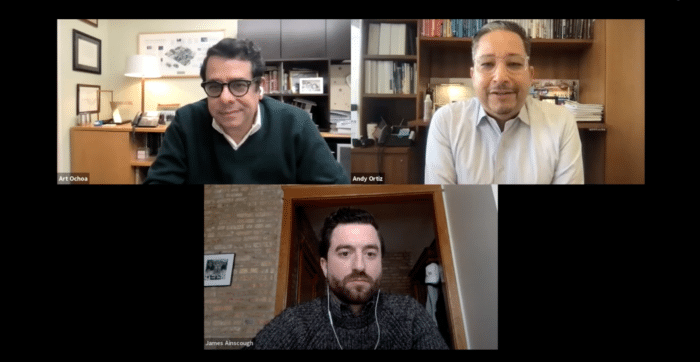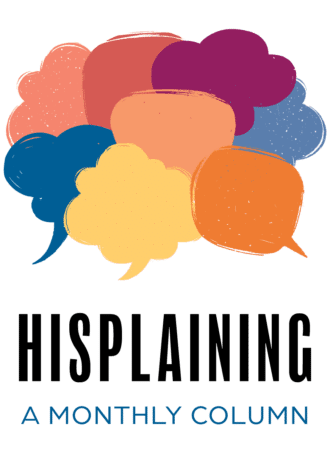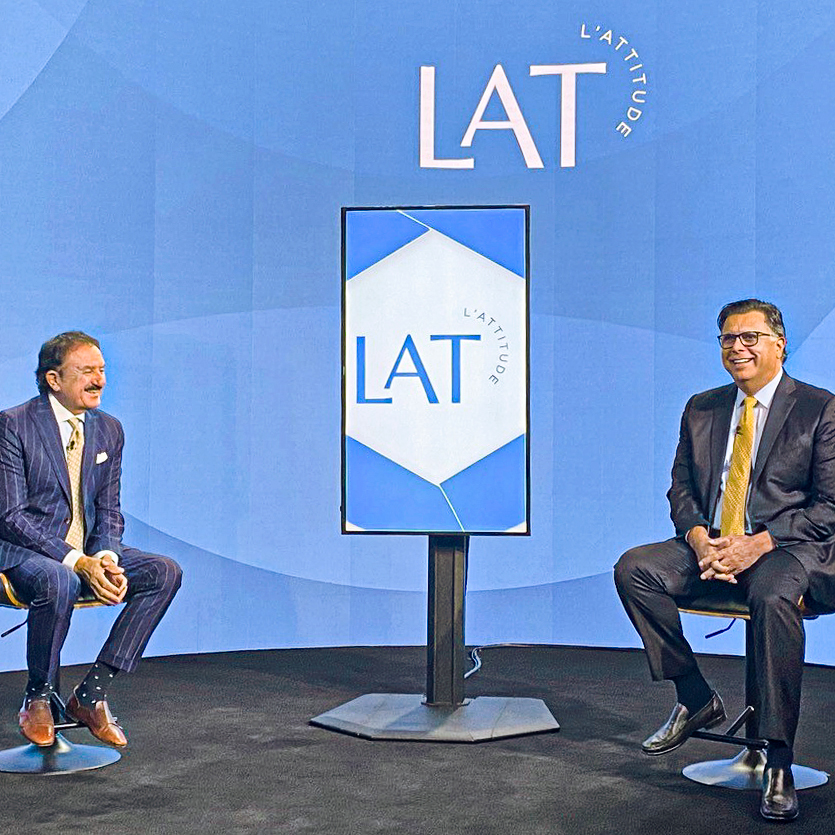|
Getting your Trinity Audio player ready...
|
Hispanic Executive was thrilled to host Cedars-Sinai’s two highest-ranking Latinos in celebration of the first issue of 2021. Titled “Under Their Care,” the issue salutes healthcare leaders across the country who have confronted the challenges resulting from the COVID-19 pandemic and found new strengths in so doing.
Art Ochoa is the senior vice president of advancement and chief advancement officer at Cedar-Sinai, and Andy Ortiz is a senior vice president and chief human resources officer. Prior to and throughout the pandemic, both executives have strived to support both the Cedars-Sinai health system and the greater Los Angeles community.

When Values Align
Both Ochoa and Ortiz are glad to work for an organization that fosters a positive environment for patients and families. That positivity, they pointed out, is crucial: for many individuals, their experience at Cedars-Sinai is the most difficult moment in their lives.
Ortiz pointed to the hospital’s “healing gardens” as just one example of how Cedars-Sinai helps families gather and even say goodbye during painful moments. “I say this a lot, but healthcare begins with heart, and that’s why I’m drawn to what we do. I feel very privileged to do this for Cedars-Sinai every day,” he said.
The Greater Community
Los Angeles has been hit especially hard by COVID-19, and Cedars-Sinai recently marked the one-year anniversary of the first COVID patient recorded within their system, Ochoa noted. Since then, Cedars-Sinai has cared for more than two thousand patients.
But the hospital also realized early on that there would be “enormous need outside the walls of Cedars-Sinai,” Ochoa said. “And so, as part of our community engagement efforts, we launched a grant-making effort that to date has given away just a little under $10 million focused on our COVID-19 response in the community around housing and homelessness, food insecurity, access to health care, and health equity. We’re very proud of that work, and that work continues.”
They haven’t lost focus, though, when it comes to other kinds of care. Cedars-Sinai has stayed open for other procedures throughout the pandemic.
“We’ve had to remind patients not to delay important care that’s unrelated to COVID,” Ochoa remarked. “We don’t want a public health crisis of neglected cancer, neglected heart disease, and all kinds of other things to be lurking right behind COVID.”
Protecting Employees
Cedars-Sinai has fifteen thousand employees. That’s fifteen thousand people who have been in greater need of pay protection, childcare support, and other critical solutions. According to Ortiz, the hospital has implemented many such solutions in order to help keep everyone employed. But, COVID has affected employees in ways the hospital did not expect: people are dealing with mental health issues, food insecurity, difficulties in paying rent, challenges due to their spouses being laid off, and more.
To help remedy these issues, Cedars-Sinai instituted an employee emergency relief fund.
“The pandemic has really highlighted how many people, even those who are employed, are on the edge,” Ortiz said. He added, “Being able to respond in a way [that is] proactive has been really challenging. I’m happy that we’ve been able to respond, but it’s something that I just didn’t expect a year ago.”
At the Speed of Adaptation
Some surprises have been better than others. Ortiz and Ochoa didn’t expect how well the organization would be able to adapt to many of the drastic changes that have taken place over the past year, particularly when it came to remote work.
“This notion of remote workers, there was no way in heck that 25 percent of our workforce would be able to be remote and to be productive and to operate that way in a very quick way,” Ortiz recalls. “But because of the health orders, we did it in a matter of days. We regularly ask survey questions of those remote workers to find out their satisfaction, [to see] how things are going. Do they have the tools and resources to do their jobs effectively? And we found that we have done a very good job.”
A Moment for Gratitude
Thankfully, there has been some good to come out of this past year. Ochoa, for example, reported becoming far more tech-savvy than he used to be. Both executives also noted how COVID brought home the fact that Cedars-Sinai is a mission-driven organization.
“Whether you’re a researcher working on a therapeutic that could help the world deal with this or you’re the person in the parking kiosk helping someone who’s scared have their first point of contact into the organization, and everything in between, everyone is singularly mission focused at this moment in time,” Ochoa said.
For more insights, watch the full event coverage here and subscribe to Hispanic Executive‘s YouTube channel.


